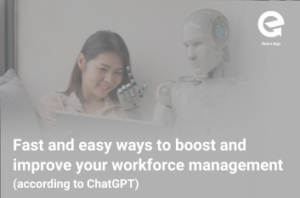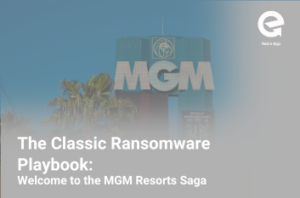The game has changed for buying software. 10 years ago, Jane Smith in HR who wanted to buy software had to work through her IT department for every step of the process.
When buying software, factors to consider included:
- How/where will we host this software?
- Who will install it on our computers?
- How much space will it consume on our devices/servers?
- How many licenses will we need?
- What kind of IT resources will be required to support the software (up front and ongoing)?
With this traditional model, IT often handled all research and product selection as well. In some cases, these are still important questions to ask in a buying process. However, the vast majority of software purchasing has been transformed thanks to Software-as-a-Service (SaaS).
When was the last time you downloaded an app on your smartphone? Do you remember your decision-making process? Your questioning probably sounded like this:
- Will this app solve a problem for me?
- Do I have storage space available on my phone?
- Is it worth the price?
- Is there any risk to me buying this and it not performing (aka… can I delete it if I no longer want it)?
While buying software for your company isn’t as simple as downloading an app, these questions are more similar to the ones you might ask when buying a SaaS product.
The buying process for enterprise solutions has undergone a significant transformation as SaaS products are now dominating the market.
Let’s review the old checklist for purchasing software through the lens of SaaS:
- How/where will we host this software?
- SaaS products are hosted by the software/technology company — not on-premise with the purchasing company.
- Who will install it on our computers?
- SaaS products generally operate through web apps and require little to no installation on computers. When installation is required, the process is generally simple and can be completed by non-IT staff.
- How much space will it consume on our devices?
- SaaS products are generally designed to use the smallest amount of space necessary; much of the data is stored in the cloud and fetched each time apps are opened.
- How many licenses will we need?
- This is still a relevant question for SaaS products, although you may find other pricing models such as flat rates for “buckets” of users or a single license that provides access for an entire company.
- What kind of IT resources will be required to support the software?
- While SaaS products may require IT involvement for initial setup or integrations with existing systems, many SaaS solutions are supported by the department that deploys them and/or the company that provides the software. In-house IT teams generally provide minimal support.
If you are considering buying software, the notion of having to work through IT can be discouraging. You’ve likely had experiences where IT staff members create seemingly unnecessary roadblocks and slow down the process of change by months or even years.
Furthermore, most IT departments are hesitant to take on additional work, and they certainly don’t want to sign up for another platform to support on an ongoing basis.
Does this sound painfully familiar?
Red e App is here to help. Purchasing and setting up our platform is designed to be painless for both you and your IT department. Want to reassure your IT team? From start to finish, here is a list of everything we will ask of your IT department:
- Security review: We will host a brief phone call or conversation during the sales/discovery process with your IT team and Red e App technical experts. On this call, we will provide a platform overview, discuss security concerns, share documentation, and answer any questions your team has.
- HRIS setup: During the design/onboarding process, your IT team (or HRIS administrator) will help set up an automated feed from your HRIS. Contact us to learn more about this process, we promise – it’s really simple! This is how we ensure that only your current employees will have access to Red e App, and it will also seamlessly update your targeted communication groups.
- Support plan: After initial onboarding, IT will create a plan to direct support requests to our support team. It’s inevitable that some employees will reach out to your IT department for help with Red e App. We want to remove this burden as much as possible, so your IT department’s primary responsibility for supporting Red e App in the long term is to forward those requests directly to us. Our in-house support team ensures that all requests are handled expertly in a timely manner.
SaaS has changed the way companies buy software — making it easier for you to facilitate change in your organization.
What was once a painful, long, and cumbersome list of toll-gates and checkpoints has become a quicker and simpler process that empowers you to get solutions in place rapidly and manage change faster.


